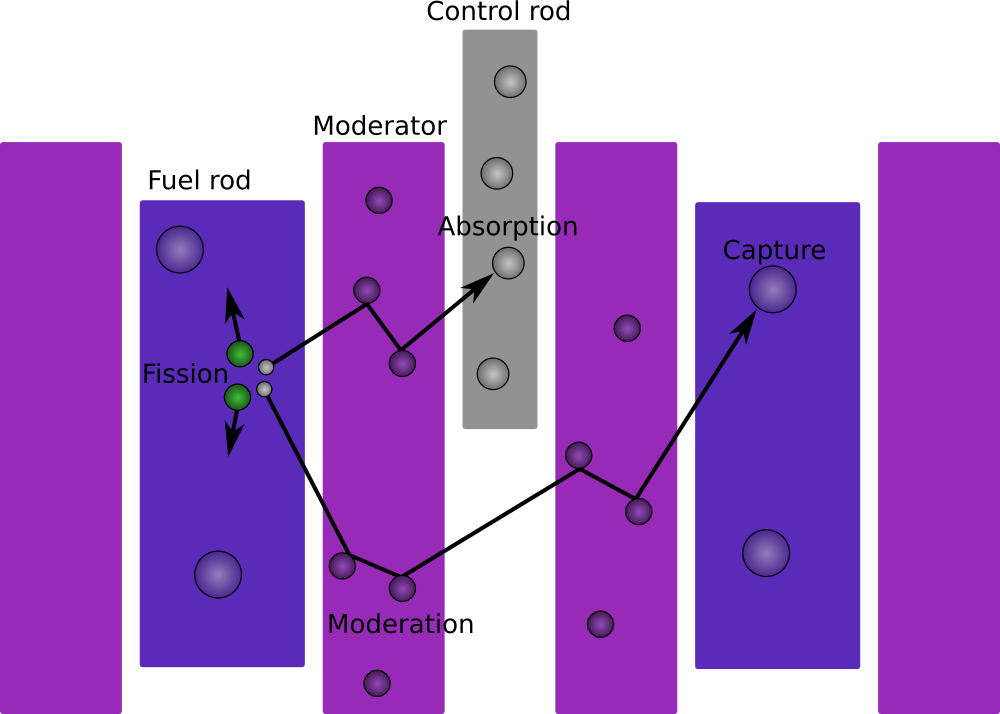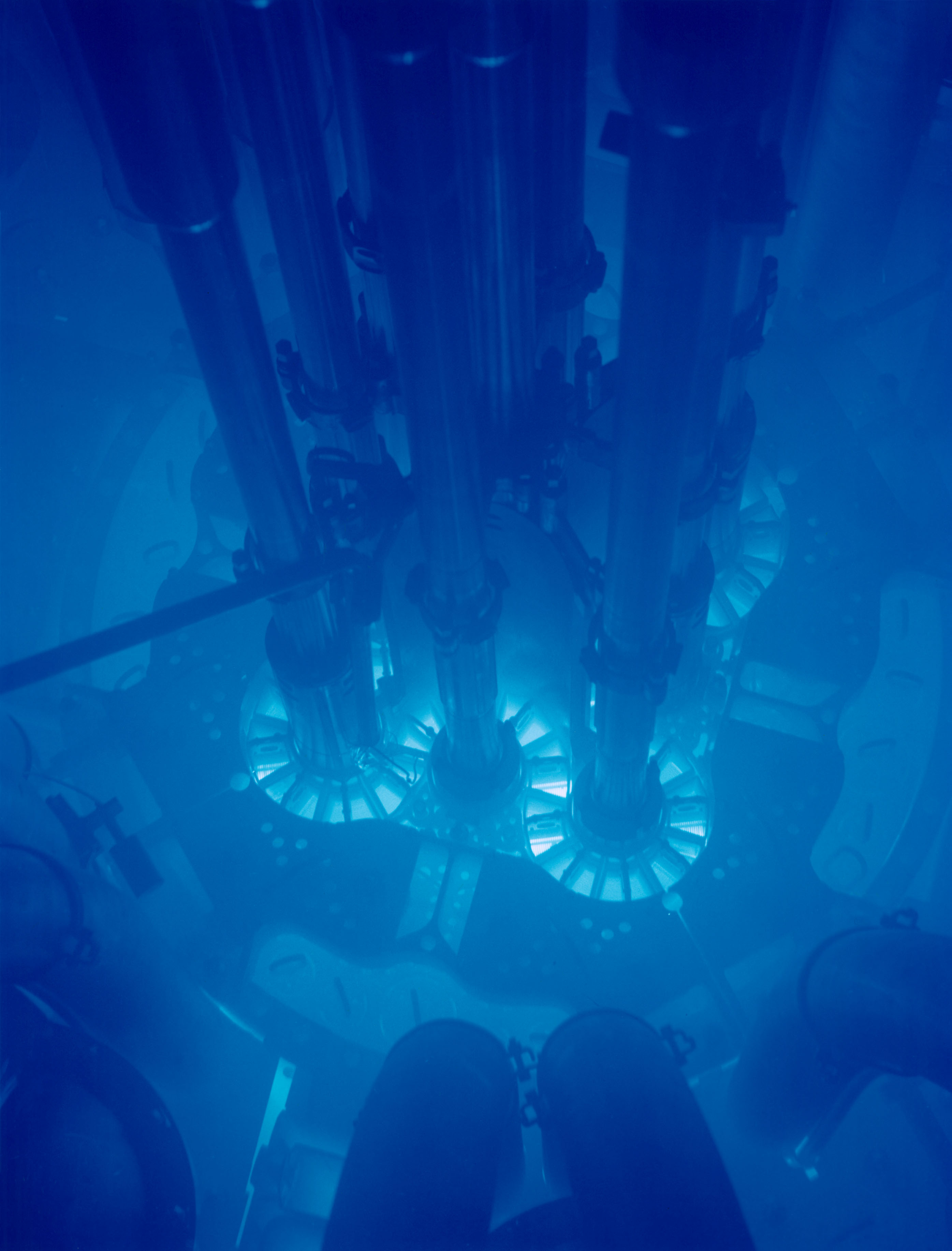Inside A Reactor:
While fission may be the process that nuclear reactors run
off of there are a lot of components to the reactor itself
that help it maintain a fission reaction and generate
electricity.
Fuel Rods:

Most nuclear reactors run on a fuel source
of uranium, a metal which is primarily produced in
countries like Canada, Kazakhstan, and Australia2. The uranium is
processed into pellets of uranium dioxide which is then
placed in fuel rods which separate the uranium from the
reactor coolant. Fuel cells are then arranged into fuel
assemblies, like the one shown below, of which there can
be hundreds inside a single reactor.
Neutron Moderators And Control Rods:

Nuclear fission often leads to the release
of "fast neutrons". As the name implies fast neutrons
travel at incredibly high speed, for a fission reaction
around 20,000 km/s. Unfortunately, high speed neutrons are
not ideal for further fission events. To fix this, neutron
moderators are used.
A neutron moderator is a material which
slows down neutrons within the reactor to speeds which
allow for the propagation of a nuclear chain reaction.
Some of the common moderators are:
- Light water (H2O)
- Heavy water (Deuterium)
- Graphite
Each of these moderators function
effectively because they're made primarily of light
elements which have the unique quality of being able to
both slow down neutrons but also not absorb neutrons.
Ideal qualities for a nuclear reaction to continue.
Another component in the nuclear reactor
are control rods. They share a similar role to neutron
moderators as they are used to absorb neutrons to prevent
further fission reactions, and thus are used to control
the speed of a nuclear reaction.
Coolant:

The coolant within a nuclear reactor is
circulated through the reactor, often directly past the
fuel cells, in order to collect heat from the reactor
which can then be used to generate electricity elsewhere
within the nuclear power plant. The most common type of
coolant is simply water, which also functions as a
moderator in these reactors, but other types of less
frequently used coolants are:
- Heavy water
- Carbon Dioxide
- Liquid Sodium
- Helium
Electricity
Generation:
All of the factors listed above serve to
allow for electricity generation. Different types of
reactors generate electricity in different ways, but the
standard way involves water being heated and turned into
steam, which can then be used to power a generator.